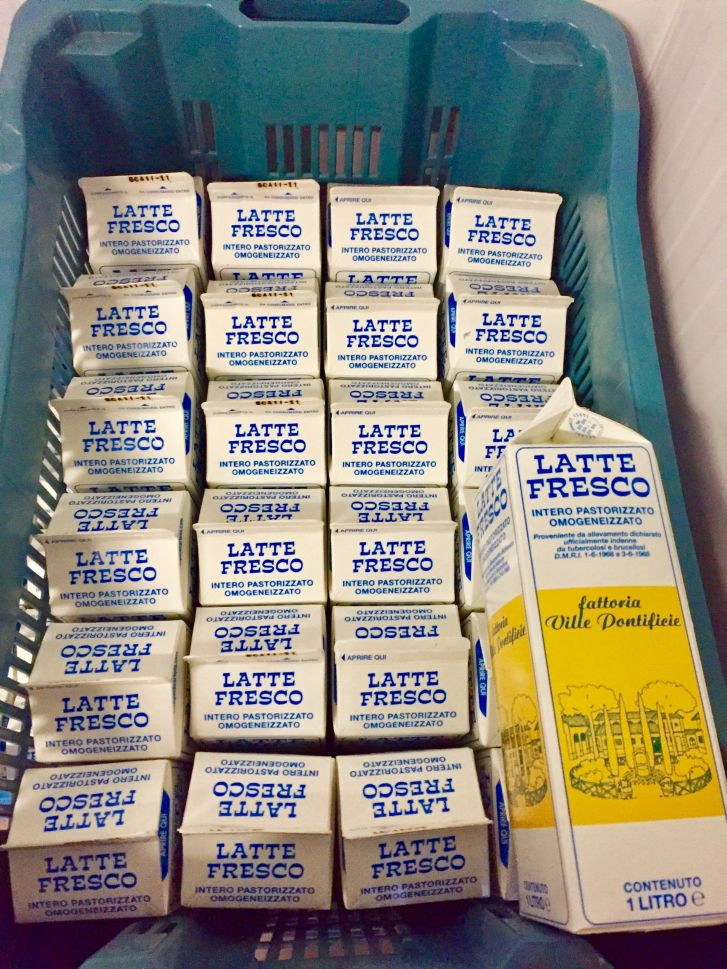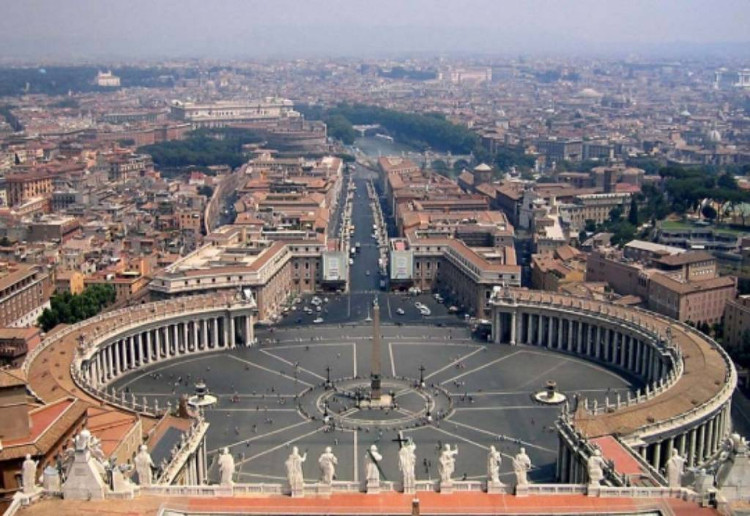Why did the Vatican suddenly take the wall paint?
The restorers have used a special paint made from cow's milk to repaint the Belvedere castle - the place where many works are stored.
The chief architect in charge of remodeling the Vatican - Mr. Vitale Zanchettin said the milk wall paint is an ancient formula that has been proven to be more effective than any modern compound.

The type of milk used to mix into paint.
Architect Vitale Zanchettin explains: 'We do not remember the past. Importantly, we think these solutions help extend the life of the paint . They tried and tried. '
Stressed by Pope Francis, it must be ecologically appropriate , the milk used in the wall paint is taken from the Pope's cows raised in the farm Castel Gandolfo outside Rome.
Cow's milk will be mixed with milk lime and natural dye to produce the original creamy color paint used from the 1500s directly painted with the technique many centuries ago.
Barbara Jatta - Director of the Vatican Museum said the Pope's announcement about the environment is a guide to the work of remodeling: 'We have actually adopted methods that do not affect the environment and children people'.
Besides the use of wall paint, researchers also plan to use essential oils to clean and protect 570 statues and marble works in the museum garden.
Ancient sculptures in the Vatican garden of 220,000 square meters are corroded by bacteria and fungi from grass dust and surrounding soil.

Vatican.
With years of research on environmentally friendly solutions, scientists have discovered essential oils extracted from oregano herbs and thyme to effectively prevent biologically destroyed marble works. without affecting the health of employees who care for or affect works. This essential oil is extracted from organic plants in Sicily.
According to the Vatican Museum, working with environmentally friendly products is considered a top priority to ensure employee health here. A staff of 100 people daily must take turns cleaning and repairing art works, buildings to serve 6 million visitors each year.
According to architect Zanchettin, the cost of hiring workers is quite expensive, but Vatican officials always want to choose people instead of machines to do the job. Restoration of art and architecture requires elaborate skills and years of experience that machines cannot learn.
- Who would have thought we could fight earthquakes and fires thanks to ... painting the walls?
- E-ink technology bricks will eliminate wall paint in the future
- Paintings change color like chameleon
- Secret inside the Vatican's closed room
- 10 interesting things about the Vatican
- How is the Vatican - the world's smallest business and investment?
- Baits, wall paint cause blood cancer in young children?
- The 500-year mystery of the artist Raphael is decoded in the Vatican
- Animal world in Vatican
- The first water in the world can be eaten
- Vatican knows secrets about aliens?
- Brick walls can absorb light that creates energy
 'Fine laughs' - Scary and painful torture in ancient times
'Fine laughs' - Scary and painful torture in ancient times The sequence of numbers 142857 of the Egyptian pyramids is known as the strangest number in the world - Why?
The sequence of numbers 142857 of the Egyptian pyramids is known as the strangest number in the world - Why? History of the iron
History of the iron What is alum?
What is alum? Why do most yachts are white while the cargo ships are quite colorful?
Why do most yachts are white while the cargo ships are quite colorful?  See how the Mayan color is painted
See how the Mayan color is painted  Find out how to save Van Gogh's paintings
Find out how to save Van Gogh's paintings  The processing speed is about the time of the human brain
The processing speed is about the time of the human brain  Found a 100,000-year-old paint bowl in an old cave
Found a 100,000-year-old paint bowl in an old cave  Qin Shihuang's terracotta army was painted with eggs
Qin Shihuang's terracotta army was painted with eggs 